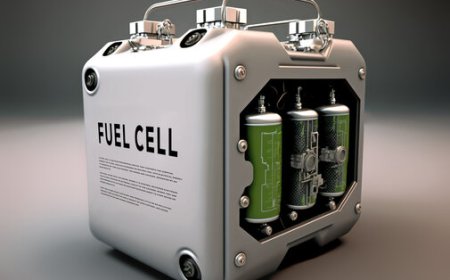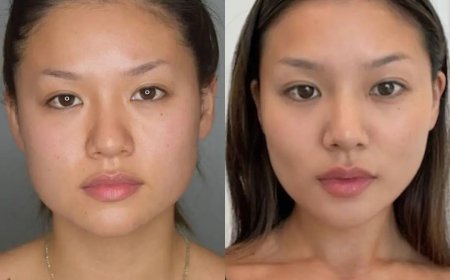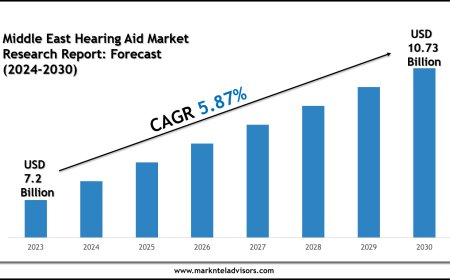The Role of Chemical Peels in Hyperpigmentation Treatment in Islamabad
Reveal smoother, clearer skin with professional Chemical Peels in Islamabad—a safe, effective solution for acne, pigmentation, and signs of aging.

Hyperpigmentation is a common skin concern that affects people of all ages and skin types. It is characterized by dark patches, spots, or uneven skin tone caused by the overproduction of melanin. In a city like Islamabadwhere strong UV radiation, hormonal changes, acne, and pollution contribute to skin damagehyperpigmentation is especially prevalent. Thankfully, one of the most effective non-surgical treatments available today is the chemical peel. Many dermatologists now recommend Chemical Peels in Islamabad as a powerful solution for reducing pigmentation, evening skin tone, and restoring radiant skin. Chemical Peels in Islamabad are tailored to each patients skin type and pigmentation severity, offering targeted and long-lasting results.
Understanding Hyperpigmentation
What Is Hyperpigmentation?
Hyperpigmentation occurs when excess melanin (the pigment that gives your skin its color) is produced in certain areas, leading to darker patches. Common types include:
-
Post-inflammatory hyperpigmentation (PIH): Caused by acne, injury, or inflammation
-
Melasma: Often hormone-induced and worsened by sun exposure
-
Sunspots (lentigines): Triggered by prolonged UV exposure
-
Freckles: Typically hereditary but darken with sun exposure
While hyperpigmentation is generally harmless, it can be cosmetically distressing and difficult to treat with topical skincare alone.
Why Hyperpigmentation Is Common in Islamabad
Several environmental and lifestyle factors contribute to pigmentation issues in Islamabad:
-
High UV index: Sun exposure is a major trigger for melanin overproduction
-
Air pollution: Increases skin inflammation and uneven tone
-
Hormonal fluctuations: Common in both men and women, especially during pregnancy or with birth control
-
Improper skincare: Harsh products or frequent skin trauma (e.g., picking pimples) can worsen pigmentation
-
Delayed acne treatment: Leads to lingering marks and dark spots
Due to these factors, there is a growing demand for professional treatments like chemical peels to safely and effectively reduce pigmentation.
How Chemical Peels Work for Hyperpigmentation
A chemical peel is a skin-resurfacing procedure that uses a chemical solution to exfoliate the top layers of the skin. As the damaged skin peels away, new, evenly toned skin replaces it.
Here's how they specifically help with pigmentation:
-
Accelerates Cell Turnover:
Chemical peels remove the outer layer of the skin, which often holds the most pigment. This speeds up the skins natural renewal process. -
Suppresses Melanin Production:
Certain acids used in peelslike kojic acid or lactic acidhave a lightening effect and help reduce excess melanin production. -
Improves Product Penetration:
After peeling, the skin is more receptive to topical treatments like vitamin C, retinoids, or brightening serums, enhancing their effectiveness. -
Stimulates Collagen:
Medium to deep peels promote collagen remodeling, which helps reduce scarring and post-inflammatory marks.
Best Chemical Peels for Treating Hyperpigmentation
1. Glycolic Acid Peel
-
Derived from sugarcane, this alpha-hydroxy acid (AHA) is ideal for fading mild pigmentation.
-
Suitable for all skin types and offers minimal downtime.
2. Lactic Acid Peel
-
A gentle AHA ideal for sensitive or dry skin.
-
Hydrates while exfoliating and brightening the skin.
3. TCA Peel (Trichloroacetic Acid)
-
A medium-depth peel that treats deeper pigmentation like melasma and acne scars.
-
Requires downtime but delivers significant improvement.
4. Jessners Peel
-
A blend of lactic acid, salicylic acid, and resorcinol.
-
Great for treating post-acne pigmentation and uneven tone.
5. Mandelic Acid Peel
-
Particularly beneficial for darker skin tones due to its gentle nature.
-
Targets PIH without causing irritation.
Chemical Peels and South Asian Skin Tones
Treating hyperpigmentation in melanin-rich skin requires expertise. Medium to dark skin tones are more prone to developing post-inflammatory hyperpigmentation if the peel is too strong or improperly applied.
Thats why professional supervision is essential. Dermatologists in Islamabad carefully select peel types and strengths based on:
-
Skin tone (Fitzpatrick Type IIIV)
-
Type of pigmentation
-
Skin sensitivity and history
Mild, repeated peels are often preferred over a single aggressive treatment to reduce the risk of complications and ensure even results.
What to Expect During Treatment
Consultation:
A skin analysis is done to identify pigmentation type and depth. Based on this, a suitable peel is selected.
Procedure:
-
Your skin is cleansed and prepped.
-
The peel solution is applied evenly and left on for a specified time.
-
You may experience a mild tingling or stinging sensation.
-
The peel is then neutralized or left to self-neutralize depending on its type.
Post-Treatment:
-
Mild redness and peeling typically occur 23 days after treatment.
-
Within a week, brighter and more even-toned skin emerges.
-
Multiple sessions are often needed (usually 36, spaced 24 weeks apart).
Post-Peel Care Tips
To optimize results and avoid side effects:
-
Use broad-spectrum sunscreen daily
-
Avoid direct sun exposure, especially during peak hours
-
Do not pick at flaking skin
-
Hydrate and moisturize regularly
-
Avoid exfoliating or using active ingredients (retinol, acids) for at least 57 days
Following proper aftercare ensures safe recovery and enhances the peels effectiveness.
How Many Sessions Are Required?
While some results are visible after a single session, hyperpigmentation often requires a series of treatments for full improvement. Heres a general guideline:
-
Mild pigmentation: 34 sessions
-
Moderate pigmentation or melasma: 46 sessions
-
Deep scars or chronic conditions: Ongoing maintenance every 12 months
Your dermatologist will provide a custom plan based on your individual progress.
Benefits of Chemical Peels for Hyperpigmentation
-
Non-invasive and relatively painless
-
Safe for all skin tones when supervised
-
Customizable for different skin conditions
-
Enhances the effectiveness of homecare products
-
Delivers long-term results with maintenance
Final Thoughts
Hyperpigmentation may seem stubborn, but with the right treatment plan and professional care, you can achieve brighter, clearer, and more even-toned skin. Chemical Peels in Islamabad are a proven and effective solution to help you take control of your pigmentation issues in a safe, non-invasive manner.
If youre ready to begin your journey toward flawless skin, consult the experts at Dynamic Clinic. Their experienced dermatologists specialize in pigmentation and tailor each treatment to your specific skin type, ensuring both safety and outstanding results with every session.































